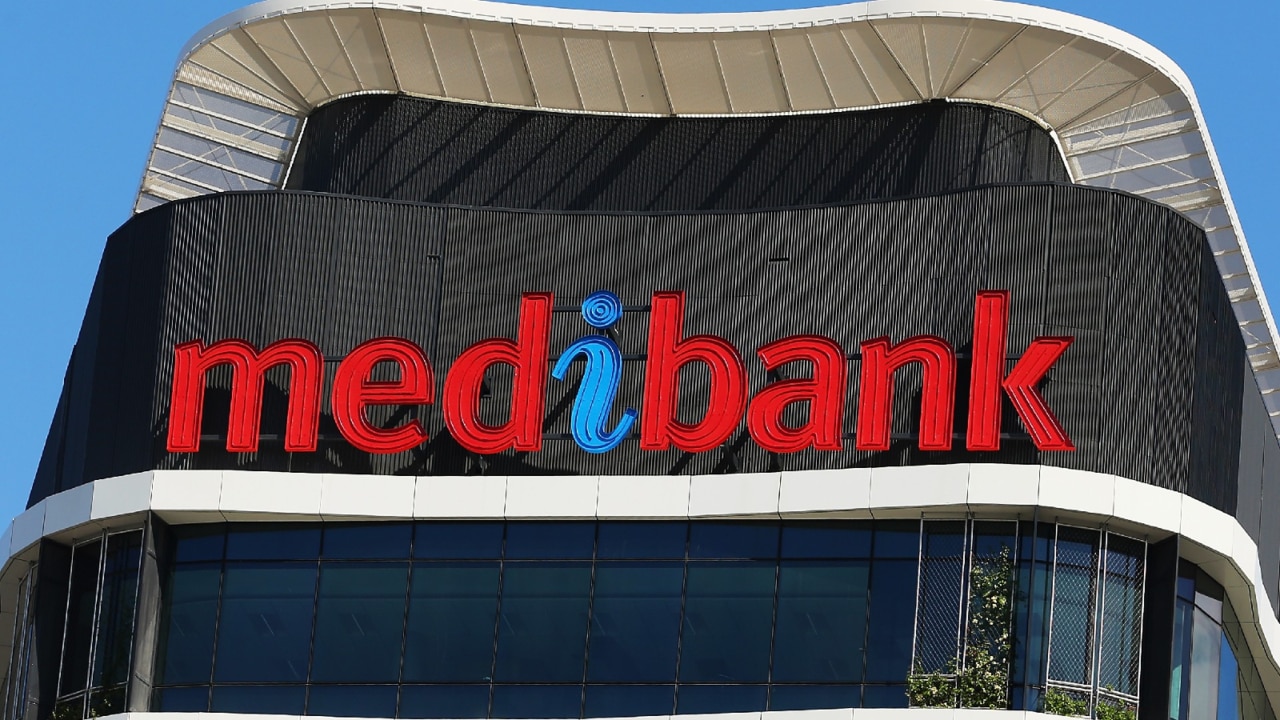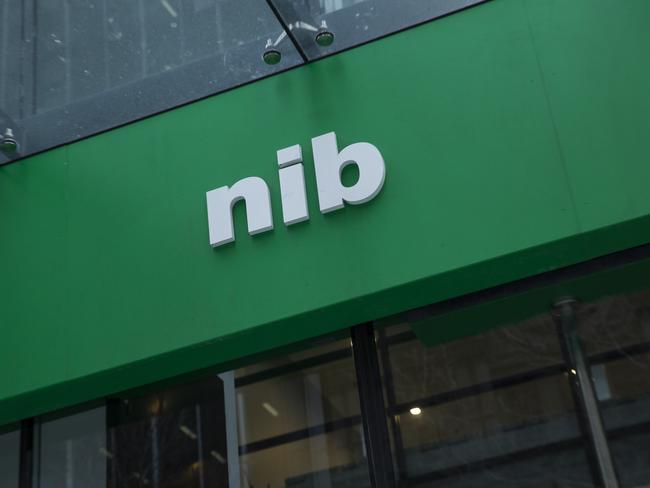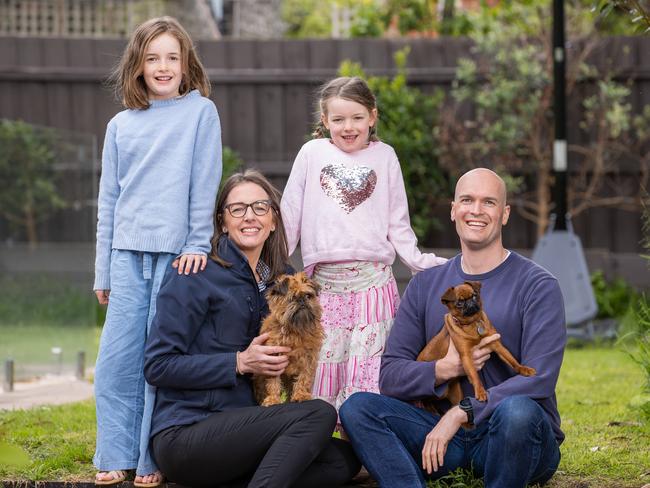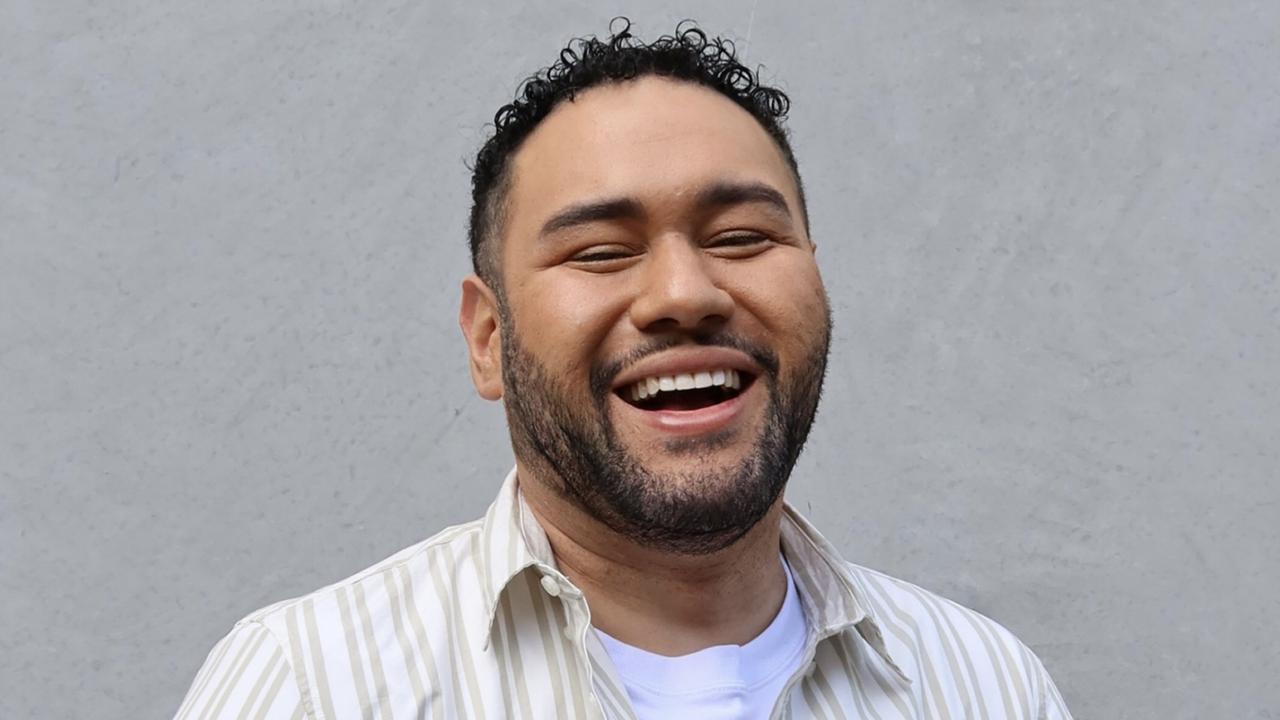Find the cheapest private health insurance in your state
The nation’s most miserly health insurance funds have been exposed. Search the list to get a better deal and save thousands.

National
Don't miss out on the headlines from National. Followed categories will be added to My News.
Exclusive: Australia’s stingiest health funds – those that return the lowest amount of their premium income as benefits to their members — have been exposed in a new report.
Australia’s fourth largest insurer Nib has emerged as the most miserly returning just 75 per cent of its premiums to members.
Nurses and Midwives Health fund ( NMW ) is the most generous handing back 98 per cent of its premiums in benefits, well above the industry average of 83 per cent.
The results are from an analysis of data in the Operations of the Private Health Insurers report issued by the regulator the Australian Prudential Regulation Authority.
It shows not for profit funds HBF and HCF were among the most generous, returning above industry average amounts back in benefits to their members.
HBF returned 88 per cent of its premiums in benefits to members, HCF 87 per cent, Medibank delivered 84 per cent of its premiums back in benefits and Bupa 82 per cent.
Eight health funds, including Nib, paid back less than 80 per cent of their premiums as benefits.

These funds were Health care Insurance (75 per cent), National Health Benefits Australia NHBA (76 per cent), Reserve Bank Health Society (76 per cent), Cessnock District Health Benefits Fund CDH (77 per cent) Australian Unity AUHL (77 per cent), CUA Health (79 per cent), ACA Health Benefits (79 per cent).
Health fund members are facing premium hikes of over 9 per cent after the major funds imposed their delayed premium rises on November 1.
To help people shop around for a better deal, News Corp has analysed more than 24,000 health fund products on offer and you can use our new tool to find the cheapest and most expensive single and family products open to the general public.
Health fund premiums surged by up to 9 per cent this month – three times more than the government’s claimed “average” rise of 2.7 per cent.
A News Corp investigation has found some Basic and Bronze packages now cost more than Silver and many Silver Plus packages cost more than Gold.
The worst news is that there will be yet another premium rise in just five months’ time, with health funds currently making submissions for another hike from April 1 next year.
The nation’s biggest health funds delayed their premium rises until November 1 as a result of billion-dollar savings they made from smaller payouts due to Covid restrictions.
Now they have taken effect, we can reveal the most expensive family policy in the country – Doctors Health Fund Gold – costs an eye-watering $977 per month.
But if you shop around and are prepared to pay a very big excess you can get top health cover for almost a third of that price - $357 a month for a family or $178 for a single.
Consumers Health Forum chief executive Elizabeth Deveny said it was “disappointing to see private health insurance premiums rising again, especially when insurers’ revenues have grown and benefits paid to their members have decreased”.
“With the cost of living impacting consumers, many may be forced to reconsider the value they receive from their private health insurance,” said Ms Deveny.
Private Healthcare Australia chief executive Dr Rachel David said the rises “were very carefully vetted by both the Department of Health and the minister”.
“There’s no evidence that premiums have increased by any more than inflation in underlying health costs,” Dr David said.
To help families struggling with rising grocery bills and interest rates, News Corp today unveils a simple new tool to help you find the cheapest health insurance policies in your state.
It shows the price difference between the cheapest and most expensive Gold products is up to $327 per month, for Silver Plus products, it is more than $313 per month and for Bronze, it is $61 per month.
We can reveal that Privatehealth.gov.au data shows the cheapest Gold health fund product in the country for families is St Luke’s Health Gold Hospital 1000 which costs just $367.40 per month but it won’t help you escape the Medicare Levy Surcharge. Only its $426 product will.
The most expensive Gold health fund product was Doctor’s Health at $977 per month in Queensland. This fund is only open to doctors and a spokesperson said it was expensive because, unlike other funds, it covered medical bills up to the level of the Australian Medical Association’s recommended fee.
The prize for most expensive family health insurance open to the general public is Suncorp’s Gold Hospital $250/$500 excess which has a price tag of $750 per month in Victoria and $723 in Queensland.
These prices are before any government tax rebates. All health fund policies are different so check whether the policy covers services you require before you switch
The Federal Government claimed health fund policies rose by an average of 2.7 per cent but our analysis shows some policies rose by a lot more.
Defence Health raised the price of its Ultimate Gold Hospital product depending on the state, by between 4.5 per cent and 13 per cent or $13 –$22 for singles per month, and up to $90 for families.
The fund said the utilisation of its gold product had been high, “the premium increase for this product reflected the increasing cost of claims for mental health, pregnancy and birth related services and joint replacements”.
One major health fund HBF, which cancelled its premium rise entirely in 2020, increased premiums on its Gold Hospital with Flexi 60 extras products cover by 11.4 per cent or almost $400 a year for singles and by up to $793 a year for families on April 1.
Nib members who have Gold hospital policies are facing rises of 6.77 to 6.81 per cent. Bupa’s Gold Complete Hospital cover with $500 excess rose by 4.7 per cent.
Australia’s biggest fund Medibank has delayed its premium rises until January 16 as a result of the Russian hack of its members data but its website shows its Gold Complete policy will rise by 6.9 per cent, its Silver Plus policies by 4.5 per cent and its Bronze policies by 2.9 per cent.
We found some Bronze and Basic products cost more than Silver products and many Silver products cost more than Gold.
Recently a rule change allowed health funds family policies to cover non student family members up to the age of 31 but doing this can add substantially to your premiums – more than $1000 a year in the case of family cover.
BEST DEALS BY STATE
‘GET A BETTER DEAL’
Cost conscious mother-of-two Louisa Hollenberg used a health fund broker to find a cheaper policy.
The 45-year-old, who runs Gold Coast day spa Earth and Skin, switched to health fund ahm after the last premium rise to save money and will be checking again to see if she has the best deal.
She originally took out health insurance because government policies forced them to do so to avoid the Medicare Levy Surcharge.
“Having a young family we have a 10-year-old and an 11-year-old and my daughter’s getting braces at the moment so we actually increased our policy to cover for orthodontics,” she said.
Despite paying for health cover, she said she still faced out of pocket expenses when she used it.

CHANGING INSURERS ‘A LITTLE BIT OVERWHELMING’
Melbourne vet Nicole Rous has had private health insurance with the one health fund her entire life.
“We’re still with the same private health insurer that I was with as a child — Teacher’s Health — because my mum was a teacher,” she said.
Her family has a Silver Plus policy with essential extras.
“Before we got pregnant the first time I had a quick look around at the different insurers and nothing was particularly inspiring to change,” the 40-year-old mother of two said.
She had thought health cover was not like car insurance where you had to check if you had the best deal every year, until we informed her prices could vary by as much as $250 for the same level cover between funds.
“I guess you go with what you know sometimes because the understanding of all the ins and outs of private health insurance are a little bit overwhelming for a lot of people.”

MAJOR FUNDS FAILING TO MEET GOLD STANDARD
Health funds raked in a record breaking $4.5 billion more in premiums than they paid out in benefits last financial year.
That’s almost $1 billion a year more than the surpluses they made before Covid.
The only reason their final profits did not surge was they hiked their administration costs by a massive 17 per cent since 2019 to cover increased IT costs and extra call centre staff.
They also lost money on investment income as the stock market fell in reaction to inflation and the war in Ukraine.
Analysis of Australian Prudential Regulation Authority (APRA) data by Catholic Health Australia (CHA) finds all of the major funds are failing to meet the gold standard of returning 90 per cent of premiums to their members.
In 2022, the industry as a whole only returned 83 per cent of its $26.6 billion premium revenue to members.
NIB provided the worst value, returning a measly 75 per cent of premiums to members.
Catholic Health Australia found insurers have increased their management expenses by 18 per cent since 2019 and are sitting on a $2 billion mountain of cash due to reduced claims during pandemic lockdowns.
“If insurers don’t provide good value, more people will simply go without insurance, which would heap extra pressure on public hospitals, further lengthening hospital waiting times,” CHA Health Policy Director Caitlin O’Dea said.
Health fund management expenses have increased faster than benefit payouts, average wages or even prices, former senior health department bureaucrat Charles Maskell-Knight revealed in health publication Croakey.
Private Healthcare Australia chief Dr Rachel David said any excess profits being made by the funds as a result of Covid were being handed back to members via direct cash backs or by postponing price rises.
Australian Medical Association president Professor Steve Robson urged the government to establish a Private Health System Authority – a body with the expertise and the power to develop and drive reforms, while keeping the system fair.
He has also proposed that insurers return at least a set minimum amount to funding healthcare, for every premium dollar patients pay.




